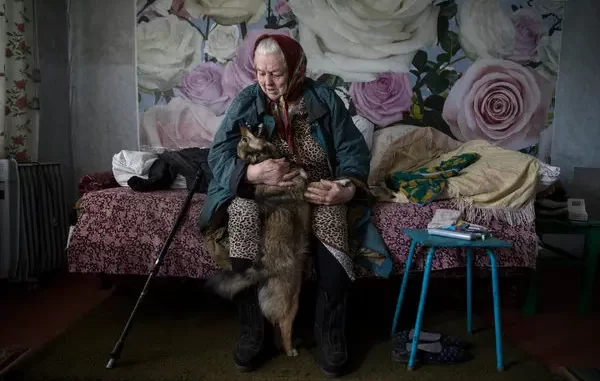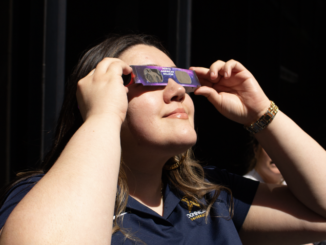
By: Litzi Duran
Contributing Writer
From Afghanistan to Ukraine, The Pride and Dangers of Photojournalism: Paula Bronstein, Reflections of Her Journey
On Tuesday April 4, Dominican hosted award-winning photojournalist Paula Bronstein for a lecture exposing students to the realities of what it takes to be in that career.
She began her lecture by showing her recent photo project in Ukraine capturing the elderly. This project was special to her because of the large elderly population and the lack of media coverage of their experiences.
“I’m going to bring attention to this war by focusing on a different angle, the elderly. The elderly that are affected by the war, the elderly that are staying in their homes and refuse to leave,” said Bronstein.
She went on to present images from her book on Afghanistan, Between Hope and Fear. She was hired by Getty images to capture pictures in Afghanistan in 2001.
“It was all about photographing Afghan living against the backdrop of war, that is what was meaningful to me,” said Bronstein.
The pictures she has taken often involve vulnerable people of different cultures in compromising conditions. This can range from children suffering the aftermath of a bomb shelling, women having miscarriages in a hospital, and more.
She explained the importance of adapting to the cultures of around the world to be able to establish trust among her subjects.
“When a female journalist is approaching them, they really think, ‘Oh my gosh they really care,’” said Bronstein.
The obstacles she has faced to publish these vulnerable moments is the accessibility to resources in these countries. One major difference between her coverage of Afghanistan to Ukraine is predominately the internet access.
“One of the most well covered wars in the history of world conflict,” said Bronstein. “Text, radio, logging, everything is documented on their phones, [and] the internet just adds to this instant documentation.”
Another part of her experience covering these two areas, is her disclosing her identity of being an American. She explained that, not only could disclosing that in a play like Afghanistan close people off from wanting to cooperate with you, but it can also put a person in a dangerous situation if the Taliban became aware of it.
“You have to be able to think about how you’re getting those photographs to tell that story, especially when it involves a serious war crime,” Bronstein explains. “It’s not for everyone, not everyone can handle seeing death or mass destruction. I work with translators and drivers in Ukraine that have never seen death in their lives.”
At the beginning of her career, she used to work for local newspapers. When she began to cover international stories, she realized she wanted to go beyond local and take on a new set of challenges to bring exposure to these voices.
Bronstein explains that being a freelance reporter in Ukraine has been the most challenging experience she has had yet in terms of safety. She often has to be on the front lines of conflict. Larger companies like CNN have a larger budget and have an ambulance on hand, but freelance reporters have to make the difficult decision whether it’s safe to take the trip due to limited resources.
Despite these challenges, Bronstein loves what she does. They are what fuel her to keep going after forty years, to tell these stories of people who often are overlooked.
“I’m trying to say something different to make you look again and go back to that photograph,” said Bronstein.



